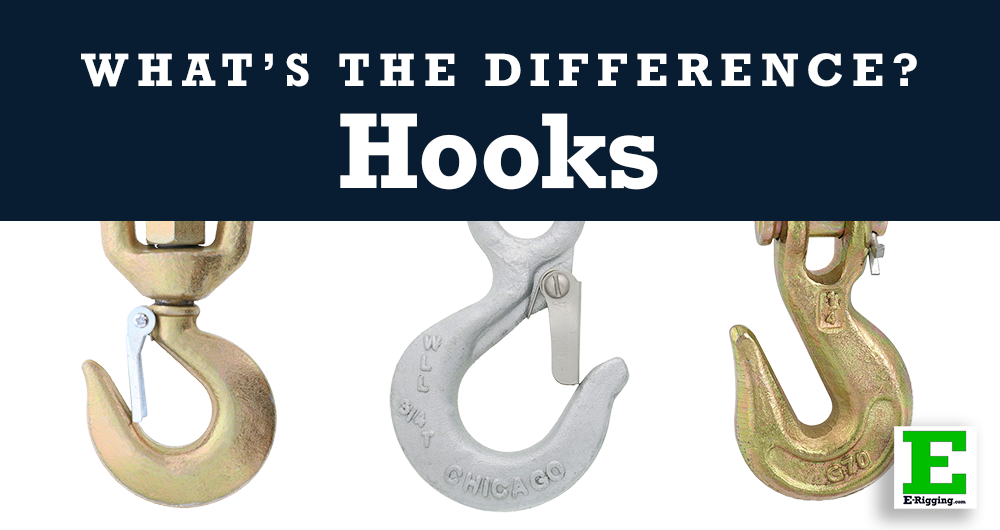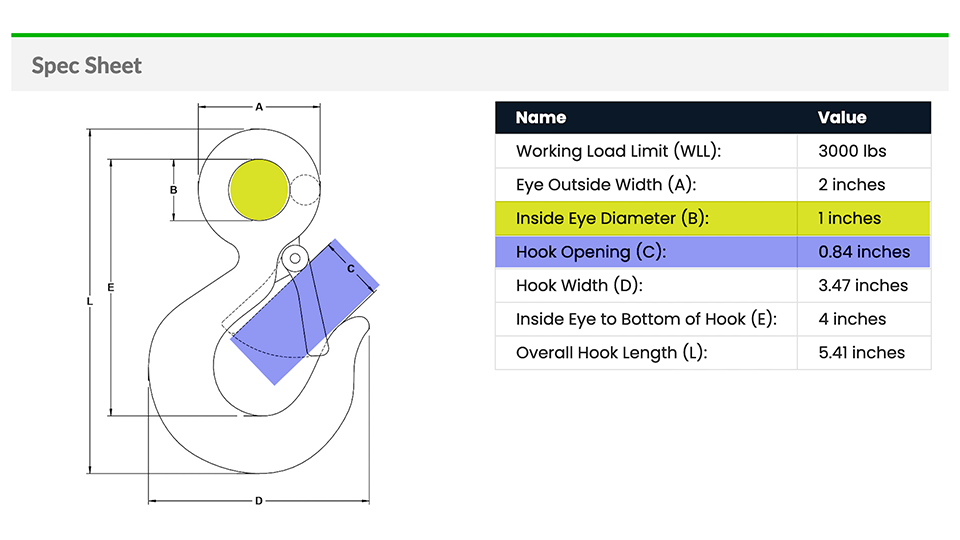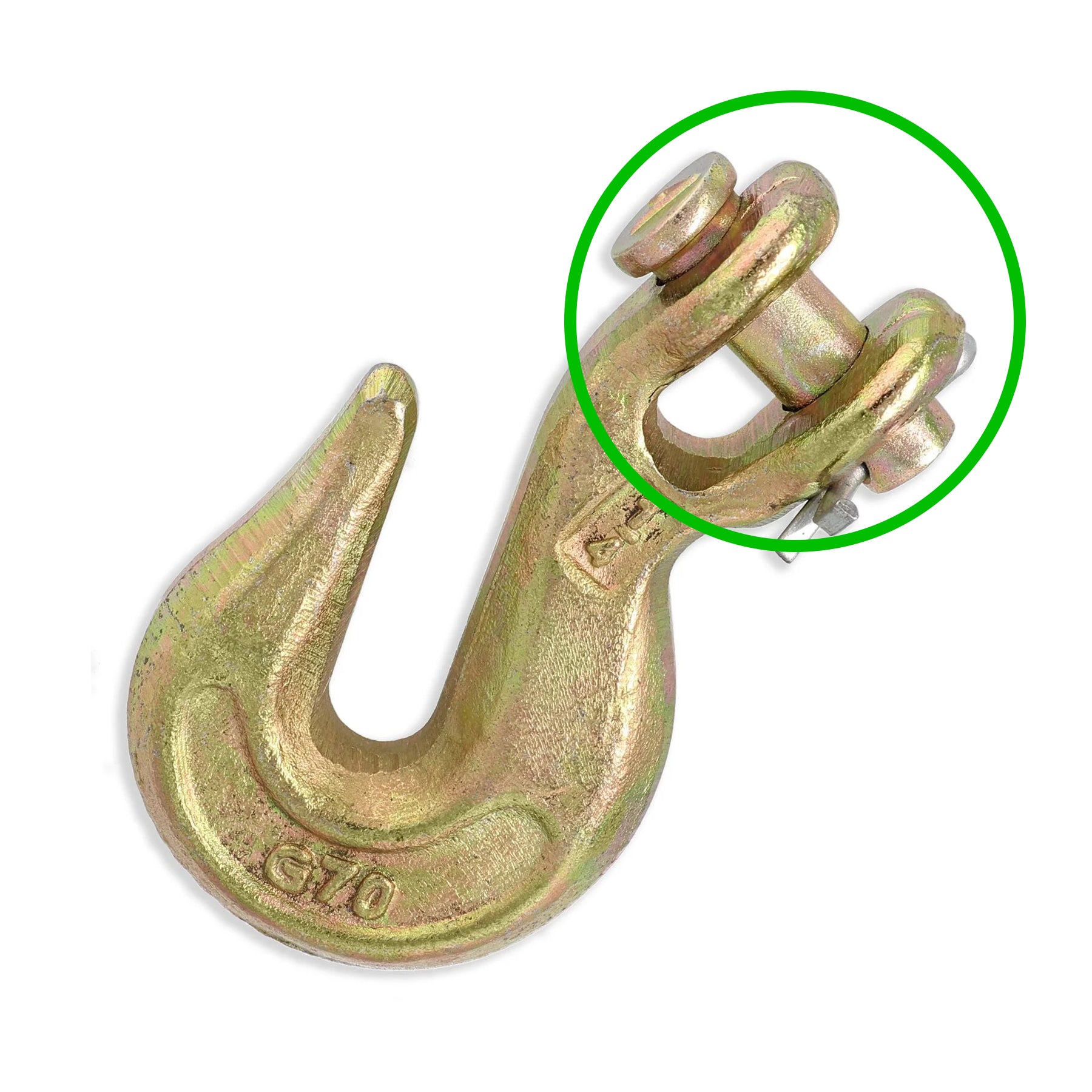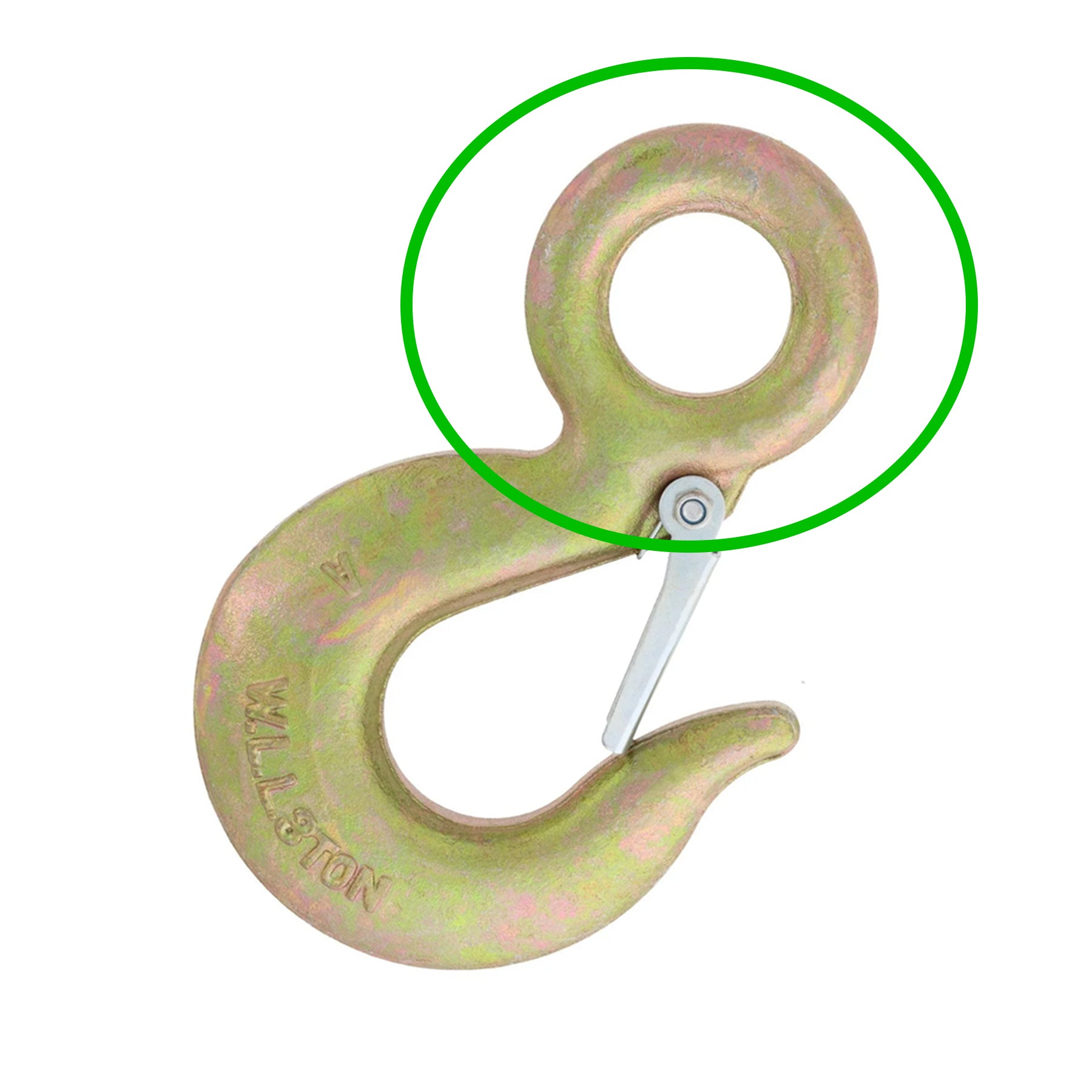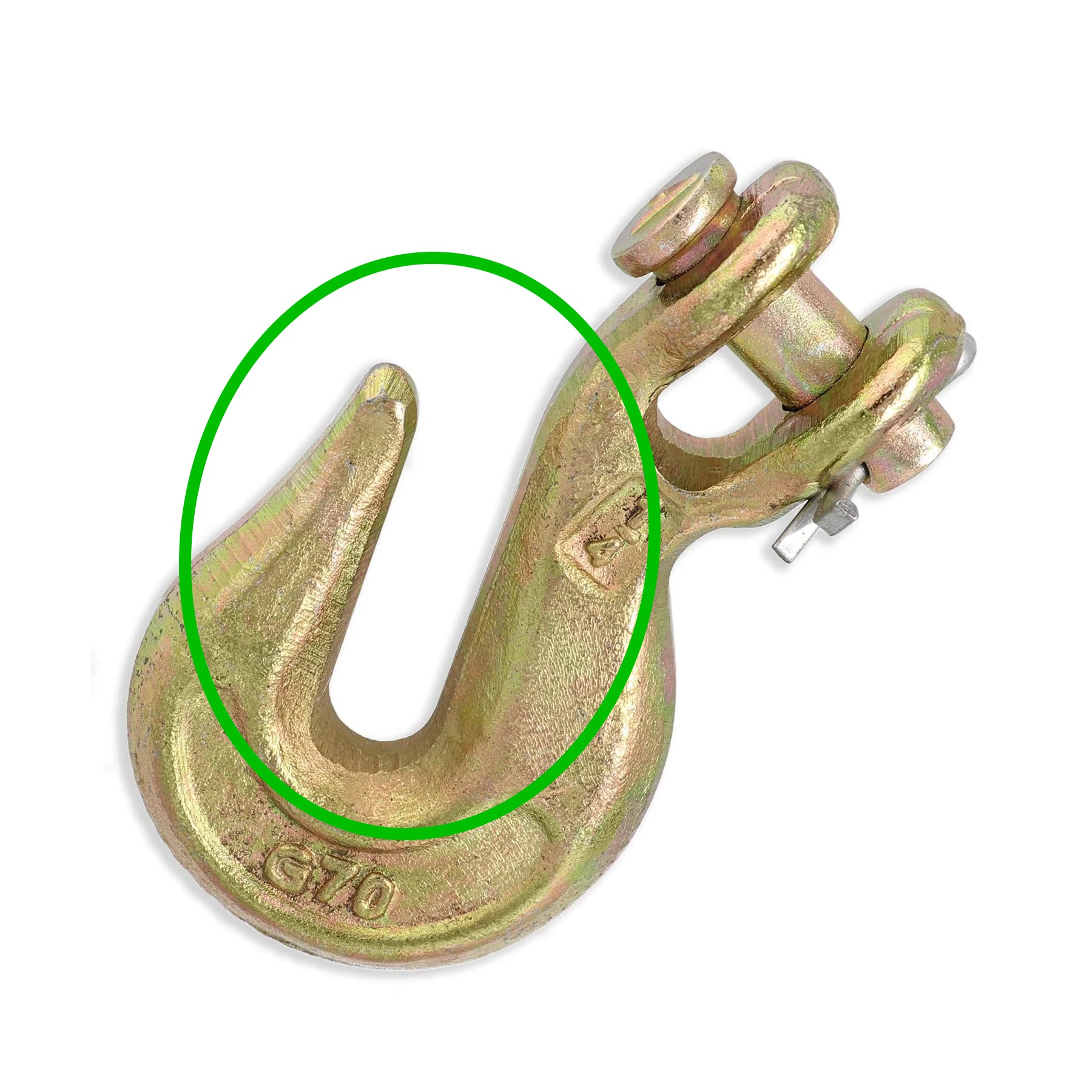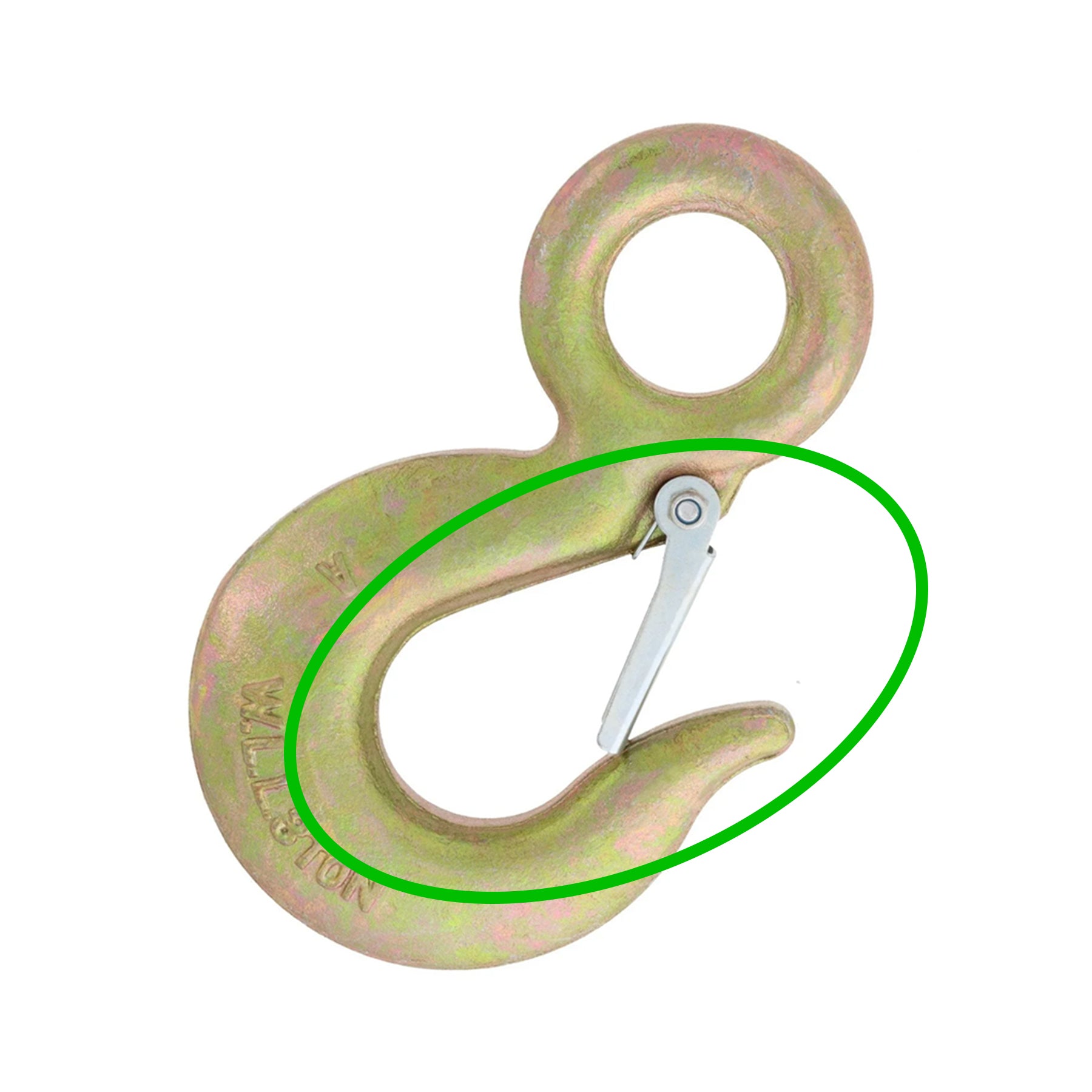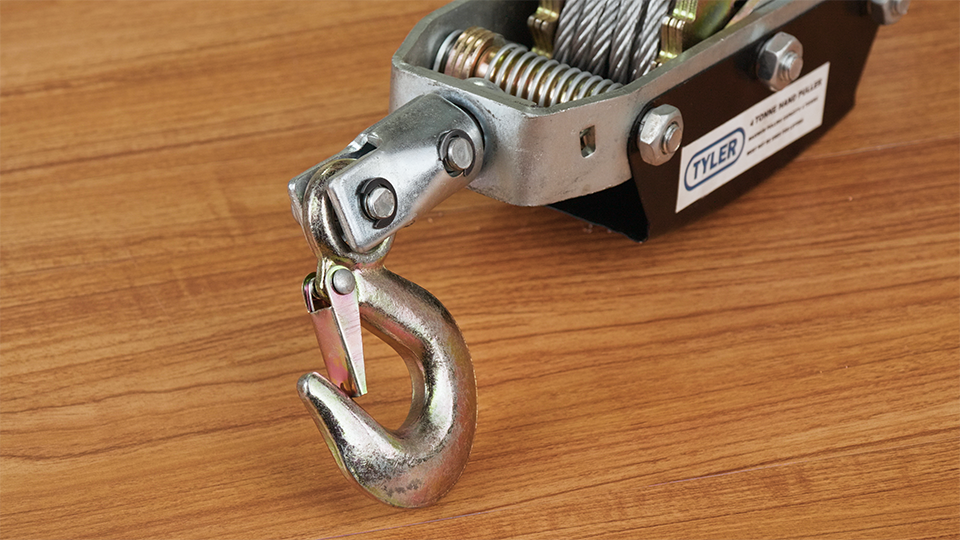
Rigging and Lifting Hook FAQ Guide
Hooks are a fundamental component to most rigging applications. There are several different types of hooks out there. While some may be better for load securement others may be better for lifting so in today's video, we're going to go over the different types of hooks and what they are best used for.
Do I need a Latch on a Lifting Hook?
Safety latch hooks are considered the standard for most rigging applications. OSHA provides standard interpretations of ASME B30.2-2001, requiring that, “Latch-equipped hooks shall be used unless the application makes the use of the latch impractical or unnecessary.” While we do offer non-safety hooks on our website, this article will deal primarily with safety-latch hooks, or hooks on which a safety latch would impede the operation of.
How do I Measure a Hook?
The size and shape of most hooks are going to be classified by their Working Load Limit. On our website, we offer hook capacities from 220 lbs. all the way up to 7 tons. Additionally, hook's diameter and opening are dimensions that will to be considered. We recommend measuring the rigging tools and fittings planned to connect to the hook, then cross-reference them with the specifications found on each products spec sheet so you’ll be able to choose the right hook for your applications.
What are Common Types of Hook Attachment Points?
Clevis Hooks
Hooks with clevis connection points are the preferred method to connect a length of chain to a hook. Clevis connections are the most compact, economical, and durable chain connections for the majority of applications.
Eye Hooks
Hooks with Eye connection points are the preferred way to connect to a hook when you aren’t directly attaching chain to the hook. These eye connections can accept wire rope, soft rope, thimbles, shackles, connecting links, and variety of other fittings.
Swivel Eye Hooks
Swivel eye hook connection points are similar to eye connection points, but they are designed to allow the operator to align and rotate the hook to the connection point before lifting. Proper alignment of the sling, hook, and connection point prevents the load from rotating or twisting once it leaves the ground.Below the Hook Attachment Points
Grab Hooks
Grab hook connections are made for gripping and holding chain links in place. They create a secure connection that won’t slip or adjust under load. Slide the link of chain in the grab hook’s slot, DO NOT put the tip of the hook in the hole of the chain. If you are using grade 80 or 100 lifting chain you may need to de-rate the working load limit when using grab hooks, or upgrade to a cradle grab hook made for lifting at full capacity.
Slip Hooks
Slip hook connections are very common and allow the chain, wire rope, strap, or any sling body to slip across the hook without getting damaged. This is especially useful in choker hitches. The large throat of the slip hook allows for easy attachment to common rigging fittings like swivel hoist rings, shackles, eyebolts, and sling eyes.Can I Replace the Safety Latch on Safety Hooks?
Safety latches are susceptible to wear and tear and can easily be bent to side or break off completely, rendering the latch inoperable. Since this is not a load-bearing component, it’s easily replaced with no effect to the overall hook operation. First, inspect the hook itself to ensure there is no additional damage (e.g. warps or cracks). If the hook passes inspection, then you need to find a third-party latch replacement kit. NOTE: At the time of writing, we at E-Rigging do not offer replacement latch kits.
Can I Replace the Safety Hook on My Hoist or Puller?
It’s entirely possible that one of the hooks we offer is compatible with something like a Lever Load Hoist or a Cable Puller. Replacing a hook on a lifting tool like this will require first inspecting the hoist or puller of any additional damage. If the hoist or puller is compromised, then it will need to be sent off for repairs by a professional or retired and replaced. If the damage is localized to the hook only, then see whether the hook can be replaced. In many cases, the hook will be retained by a pin and easily replace with a comparable hook. If the hook is permanently attached to the cable or chain, then replacement of the entire may be necessary.
For more information on rigging equipment and load binding, check out our product information and video page.
